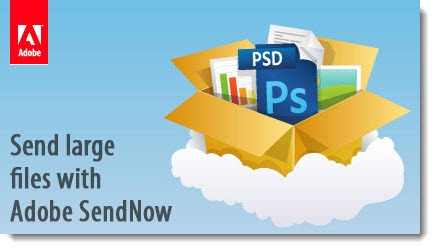It is increasingly necessary to send large file attachments by email. It continues to be a bad idea! It clogs up your mailbox and slows down your mail server and generates endless frustration when messages don’t arrive – but none of that matters. Businesses are creating larger and larger files and email is the way business is done, whether I like it from a technical perspective or not.
Microsoft has bowed to the inevitable and permits Office 365 subscribers to send up to 25Mb of file attachments to a single message. As businesses move to more recent versions of Exchange, mailbox size limits are slowly increasing at big and small companies. There can still be much frustration and gnashing of teeth, though, when a message is not delivered because it exceeds the size limits of the recipient’s mailbox or something else happens in transit to deflect the message.
There is no shortage of ways to send someone a large file. Individuals and technically-savvy users can use Dropbox, or use the file sharing feature included with LogMeIn Pro, or use any of a thousand other services and programs.
YouSendIt and Adobe have developed the most businesslike methods of sending big files.
The broad view: your large file attachment(s) are sent online to storage space supplied by YouSendIt or Adobe. A message is sent to the recipient with a download link. It’s not quite as simple as clicking Send on a message but it becomes familiar quickly.
The details are a blur of free (but quite limited) services, subscription plans for various monthly plans with various amounts of online storage space, and some frills. Both services are secure enough to attract business from big enterprises but it takes some work to understand the various ways to limit access to files and prevent download links from being passed around too far.
Adobe gave Adobe SendNow a significant face lift a few months ago and streamlined the monthly plans. If you sign up for a $9.99/month (5Gb online storage space) or $15.83/month (20Gb storage) account, you will likely download a small desktop app that automates the process of uploading files and sending messages to your recipients. It’s easy to brand the messages with your logo so they look professional.
YouSendIt has been around since 2003 and is better known than most of its competitors. One of its advantages is simple but compelling: your recipients have probably heard of YouSendIt. They might be willing to take the extra step to retrieve the attachment.
I find YouSendIt’s subscription plans fairly overwhelming to sort out. It appears to start with a “Pro Plus” account at $14.95/month, with a discount for an annual payment. Then there are more plans for larger businesses – a “Teams and Workgroups” version for businesses purchasing 5-25 licenses (prices bounce all over the place based on the number of licenses), and an “Enterprise Edition” for businesses buying more than 25 licenses, with no pricing information, just a button that ominously suggests that you “Contact Sales” for the bad news.
Both services can be used easily by visiting their web sites and pushing simple buttons to upload files. YouSendIt has a desktop app like Adobe SendNow.
 But YouSendIt has one more trick up its sleeve: a plugin that adds a YouSendIt ribbon to Outlook. When you create an email message and attach an oversized file in Outlook, YouSendIt takes over as soon as you hit the Send button. It strips the attachment from the message, uploads it to YouSendIt’s servers, and adds a link to your message where the recipient can download the file – all automatically, all behind the scenes. Your mail system sees only the text of the message and the link but is not bulked up by the attachment.
But YouSendIt has one more trick up its sleeve: a plugin that adds a YouSendIt ribbon to Outlook. When you create an email message and attach an oversized file in Outlook, YouSendIt takes over as soon as you hit the Send button. It strips the attachment from the message, uploads it to YouSendIt’s servers, and adds a link to your message where the recipient can download the file – all automatically, all behind the scenes. Your mail system sees only the text of the message and the link but is not bulked up by the attachment.
That’s been a lifesaver for some of my clients. It works, more or less. I’ve had to troubleshoot at times when it fell over but I’ve been surprised how seldom that has come up.
Your file attachments are getting bigger. Whether it’s high resolution photos or bulky PDF contracts, you’re likely to have to deal with this sooner or later. Time to start understanding these services!


Thank you Bruce for an excellent review. It helped me a lot when deciding what service to use. I am trying the free Yousendit one. The Outlook Plug In is a great tool and I like the fact that I can have my email signature so clients know the email is from me.
Thanks again,
Gerardo
Thanks! The services are beginning to leverage their cloud storage so you can use them more naturally with large attachments. Microsoft’s free Outlook.com automatically takes large file attachments and uploads them to Skydrive, then puts a link in the outgoing message so the recipient can download it from Skydrive. I’m not sure if there’s something like that for Gmail and Google Drive but it feels like the kind of thing they would do. There’s nothing like that yet for the Outlook program other than YouSendIt – yet.
Is there a reason you didn’t mention Dropbox? It’s free for some amount of space and then a fee for larger space.
Dropbox is a lovely choice and it absolutely can be used as a method of sharing large files. Lots of info about using Dropbox for file sharing here.
Dropbox is being used by small businesses for many things, but I don’t often see it used yet for file sharing with third parties. Today, the challenge is matching technology to the people who actually use it, looking for that “Ah ha!” moment when someone understands intuitively how a new bit of technology can fit into their business as a new tool. That’s true whether it’s a file syncing service or a tablet or an online platform like Sharepoint.
In general, I see people intuitively grasp the concept of sending large files by email, with some vaguely understood idea that a service like YouSendIt will make it work right. And I don’t see it when I describe the idea of a link to a file in Dropbox – there’s just something that people find slippery about it.
Use Dropbox! It works like a charm. Slightly different security implications, slightly different process, but I’m a huge fan of using tools that work for you. We’re a long way from a one-size-fits-all world!